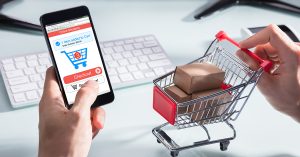
Is normalcy on the horizon? Daily activities, such as work, school, and shopping, all had to be reimagined over the last year. Businesses quickly adapted, pivoting to find new ways of operating in order to address customers’ needs while continuing to deal with a rapidly changing environment of consumer behavior changes in 2021.
Now, at long last, it appears that consumers and businesses can hopefully look toward a return to normal in the near future. The only remaining question is, what will that new ‘normal’ will look like?
No one can predict that future, but the pandemic tremendously altered consumer behavior, and it is likely that the post-pandemic normal will be fundamentally different from what it was before. In part one of the series, we looked at how consumer behaviors like cashless transactions, no touchpoints, and self-service are here to stay.
However, the pandemic also brought about a change in customer loyalty and customer demands concerning convenience and integrated shopping experiences. As businesses welcome back customers in increasing numbers, discover the additional consumer behavior changes in 2021 that companies need to know.
How is “consumer sentiment” measured?
Consumer sentiment, an economic indicator that measures how optimistic consumers feel about the state of the economy, is primarily measured through the Consumer Confidence Index (CCI) and the Michigan Consumer Sentiment Index (MCSI). Both of these indexes are based on household surveys and are reported on a monthly basis. Consumer sentiment is considered to be a useful economic indicator.
Evolution of Customer Loyalty
According to a recent report, more than 75% of consumers in the U.S. have changed their shopping behavior since the pandemic began. The driving forces behind the evolution of customer loyalty and changed shopping behavior are value, convenience, and availability.
Of those who adjusted their shopping habits, almost 40 percent have changed brands, which accounts for double the normal level of switching behaviors as compared to 2019. Initially, availability played a large role in shopping behavior changes. At the onset of the pandemic, supply-chain disruptions for many companies meant that consumers were unable to find their preferred products.
As concerning as it may be to companies, it’s not only that there was a higher than normal percentage of customers who tried new brands during the pandemic, but also that the majority of those customers might not be returning to their previous shopping habits. It’s estimated that over 60% of those who have changed their brand preference during the pandemic will make that a permanent change.
Beyond availability, convenience and value are also driving factors in the consumer behavior shifts that are likely to become the new normal. Value isn’t only defined by the price either, but also includes other ways that it can benefit the consumer. For example, does the product help solve a problem, or does its purchase have a greater purpose behind it?
Businesses will need to work harder to retain their old customers, but there may be a newfound opportunity to bring in new ones, who are now willing to try new brands. How are you reinforcing your value and ability to address a pain point?
Even as consumers expand their shopping methods and continue to try new brands, there is still an opportunity to build loyalty and goodwill with customers. Each touchpoint, every interaction along the customer journey is an opportunity for businesses to create a positive connection and a memorable experience, working towards increasing customer loyalty.
The Importance of Adaptability and Flexibility
It goes without saying that the pandemic introduced new challenges for businesses. Businesses, employees, and consumers were all forced to pause and reconsider how we work, shop, and eat. While many employees found themselves working remotely, at the same time, customers were increasingly turned to digital and contactless ways to shop. Companies across the board found themselves needing to quickly adjust to changing rules and protocols.
In many ways, the pandemic accelerated already existing trends, but it also blurred the lines between digital and physical shopping options, as physical locations suddenly needed to create or improve their digital presence through tools like Google My Business. The adaptability and flexibility that companies showed as they pivoted to meet consumer needs throughout the pandemic is the same kind of resilience that they will need now as consumer behavior in 2021 settles into the new normal.
Convenience in shopping has become an increasing priority for customers as trends point to continued demand for touchless service, cashless transactions, curbside delivery, and virtual visits, just to name a few. While businesses may have implemented some additional convenience options as a result of the pandemic, now they have to decide if those are services that can remain viable long-term, particularly if customers have come to expect them.
To be successful, companies must remain agile moving forward. While this last year may have tested your business, at Safeguard, we know that with the right products, services, and planning, your local Safeguard Advisor can help you thrive this year. Your advisor will learn about your unique goals and then help you craft a strategy with personalized solutions that fit your business. We’re here to help you grow. Call 855.778.3124 to get started.
Key Takeaways
- The pandemic tremendously altered consumer behavior, and it is likely that the post-pandemic normal will be fundamentally different from what it was before.
- More than 75% of consumers in the U.S. have changed their shopping behavior since the pandemic began.
- Availability, convenience, and value are driving factors in the consumer behavior shifts that are likely to become the new normal.
- Businesses that implemented some convenience options as a result of the pandemic now have to decide if those are services that can remain viable long-term.
- With the right products, services, and planning, your local Safeguard Advisor can help you craft a strategy with personalized solutions that fit your business.